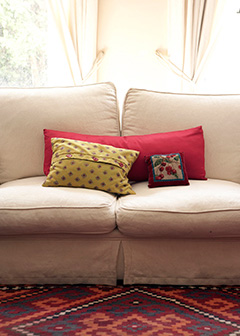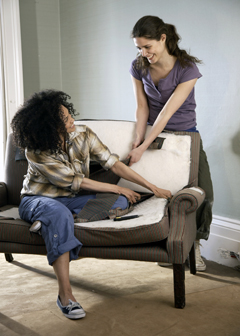Summary

| Quick Facts: Upholsterers | |
|---|---|
|
$29,960 per year
$14.40 per hour |
|
| High school diploma or equivalent | |
| None | |
| Moderate-term on-the-job training | |
| 46,900 | |
| 4% (Slower than average) | |
| 2,000 | |
What Upholsterers Do
Upholsterers make, replace, and repair coverings on furniture and in vehicles.
Work Environment
Most upholsterers work for household and institutional furniture manufacturers, upholstery shops, and automotive interior repair shops. About 36 percent of workers were self-employed in 2010. Most work full time.
How to Become an Upholsterer
There are no postsecondary education requirements to work as an upholsterer. Most workers have a high school diploma and are trained informally on the job. Some take classes to learn how to upholster furniture and sew.
Pay
The median annual wage of upholsterers was $29,960 in May 2010.
Job Outlook
Employment of upholsterers is expected to grow by about 4 percent from 2010 to 2020, slower than the average for all occupations. Growth is expected because demand is projected to increase for reupholstering work on used and antique furniture.
Similar Occupations
Compare the job duties, education, job growth, and pay of upholsterers with similar occupations.
O*NET
O*NET provides comprehensive information on key characteristics of workers and occupations.
Contacts for More Information
Learn more about upholsterers by contacting these additional resources.








